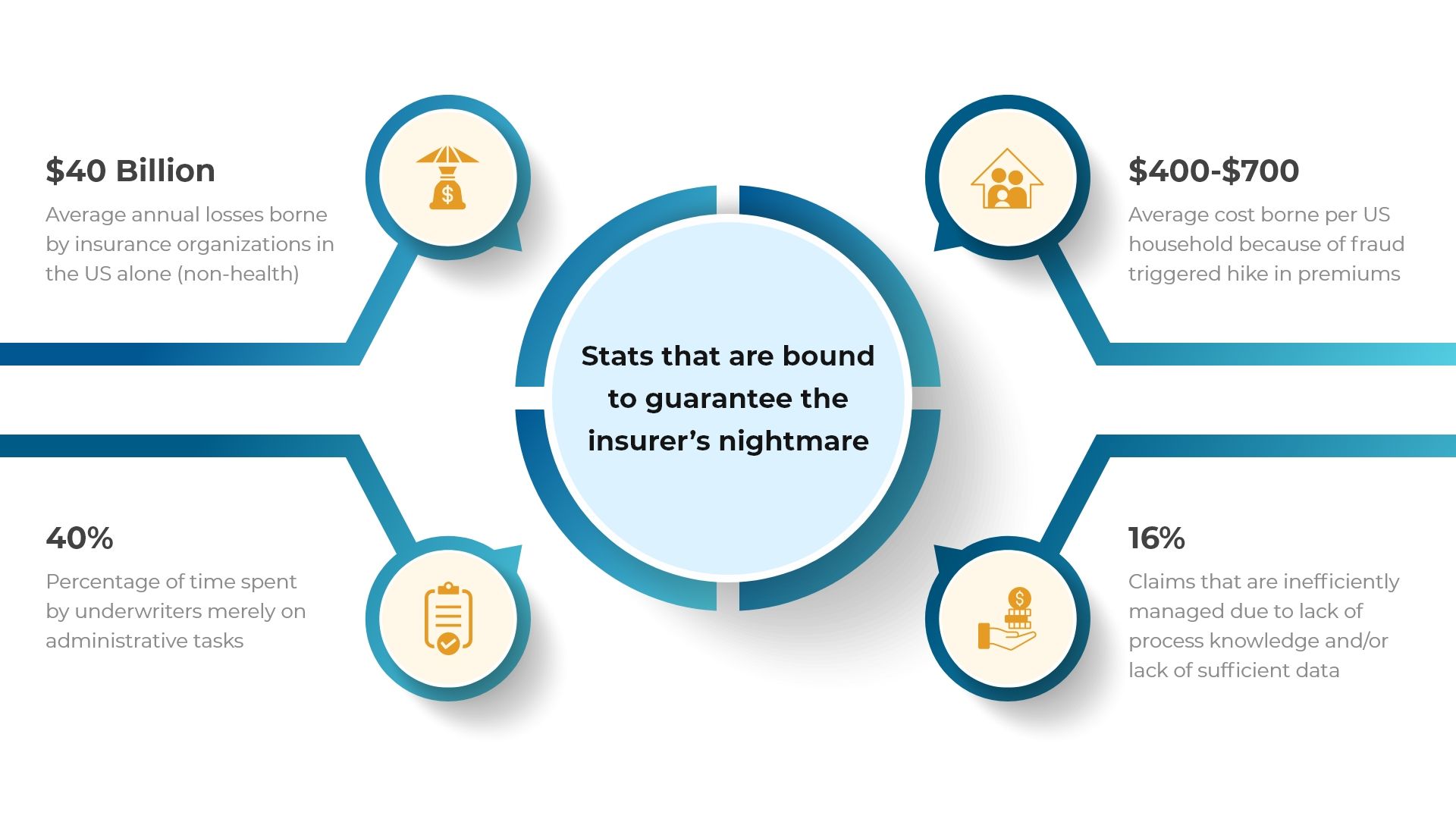In the highly competitive and data-heavy world of insurance, decision-makers are faced with a dual mandate: improve operational efficiency while enhancing the customer experience. Yet, many insurers still rely on outdated systems and manual processes that create bottlenecks across underwriting, claims, fraud detection, and sales operations.
Today’s insurance ecosystem demands real-time insights, proactive risk management, and efficient claims resolution. Business Intelligence (BI) emerges as a critical enabler to meet these demands — transforming raw data into actionable strategies that can shape competitive advantage.
This article explores four powerful ways Business Intelligence helps insurers solve key business challenges while laying the groundwork for digital maturity.

Why Do Insurance Organizations Struggle with Data-Driven Decisions?
Despite having vast reserves of operational data, many insurance providers find themselves data-rich but insight-poor. Here’s why:
- Lack of Modernized Infrastructure: Legacy systems often inhibit data integration and real-time reporting.
- Undefined KPIs and Strategy Gaps: Without clearly established metrics, departments like sales and underwriting struggle to stay aligned.
- Manual Reporting: Sales and operations teams spend excessive time generating reports, delaying insight delivery.
- Reactive Fraud Detection: Inefficient fraud management frameworks expose insurers to avoidable losses.
- Claims Process Delays: Slow, manual claims management systems impact customer satisfaction and trust.
Business Intelligence isn’t just a tool—it’s a strategic imperative for any insurer aiming to scale with control and confidence.
Business Intelligence Solutions That Insurers Should Prioritize
1. Predictive Analytics for Risk Mitigation and Revenue Growth
Predictive analytics leverages historical datasets, machine learning algorithms, and statistical models to forecast outcomes with accuracy. For insurers, this translates into:
- Proactive identification of high-risk profiles
- Improved underwriting precision
- Enhanced fraud detection models
- Smarter pricing strategies based on actuarial trends
When implemented effectively, predictive analytics helps insurers optimize risk exposure while unlocking new avenues for growth.
2. Claims Management Automation through BI
Automated, BI-integrated claims management systems reduce turnaround time, improve data accuracy, and minimize costs. They enable:
- Real-time claim status tracking
- Auto-validation of claim details and fraud flags
- Workflow routing for faster approvals
- Comprehensive audit trails
BI dashboards also consolidate claim trends, allowing insurers to continuously refine processes and benchmark operational efficiency.
3. Report Rationalization, Data Visualization & Dashboards
BI transforms static reports into real-time, visual intelligence hubs. The key components include:
- Report Rationalization: Eliminating redundant or overlapping reports to reduce noise and focus on what matters
- Data Visualization: Translating numbers into easy-to-understand visual formats
- Custom Dashboards: Tailored KPIs for sales, underwriting, claims, and leadership teams
These tools accelerate time-to-insight and reduce the cognitive load on decision-makers.
4. Enterprise-Wide Integration for Underwriting & Sales Intelligence
Modern BI platforms integrate seamlessly across departments to improve performance:
- Underwriting: Access to real-time risk indicators, market comparisons, and claim history helps underwriters price policies with confidence
- Sales: BI tools analyze sales cycles, measure discount effectiveness, and project future revenue using historical patterns
- Leadership: Executives gain enterprise-level insights with YTD metrics, loss ratios, and revenue breakdowns at their fingertips
Implement these solutions today!
The Tangible Benefits of Business Intelligence in Insurance
Fraud Detection and Prevention
BI systems ingest data from multiple internal and external sources to detect anomalies, flag suspicious patterns, and trigger alerts in real time.
- Machine learning models continuously improve fraud prediction accuracy
- Claims flagged for irregular behavior are reviewed more quickly
- Insurers reduce false positives and save investigation costs
Faster, Smarter Claims Processing
BI-backed claims systems empower teams with:
- On-demand access to case status
- Automated approval pathways for standard claims
- Third-party data integration to support decisions
- Accurate invoice generation and tracking
This results in improved policyholder satisfaction and reduced processing overhead.
Enhanced Sales Performance and Strategy
BI minimizes manual report generation, giving sales teams more time to sell. Benefits include:
- Revenue forecasting based on market intelligence
- Clear visualizations of pipeline health and conversion trends
- Real-time visibility into key KPIs: lead quality, cost per acquisition, win/loss rates
Sales leaders can course-correct faster and allocate resources more effectively.
More Accurate, Data-Driven Underwriting
BI enables underwriters to:
- Identify high-risk applications early
- Benchmark policies against similar profiles
- Use data-backed logic for approvals or premium adjustments
The result is a streamlined underwriting process with lower error rates and improved loss ratios.
How Nalashaa Delivers Insurance BI That Works
At Nalashaa, we specialize in tailored Business Intelligence services for insurance providers. We don’t just install tools — we build purpose-built analytics ecosystems aligned with your KPIs, regulatory constraints, and business workflows.
Our value proposition:
- Certified BI architects and data scientists
- Proven experience in healthcare and insurance domains
- Transparent communication, with minimal hand-holding
- Continuous support post-deployment for evolution and scaling
Whether you're modernizing claims or recalibrating underwriting, we ensure your BI stack delivers measurable outcomes.
Ready to turn data into decisions? Fill the form today, to explore a BI strategy crafted for your goals.

